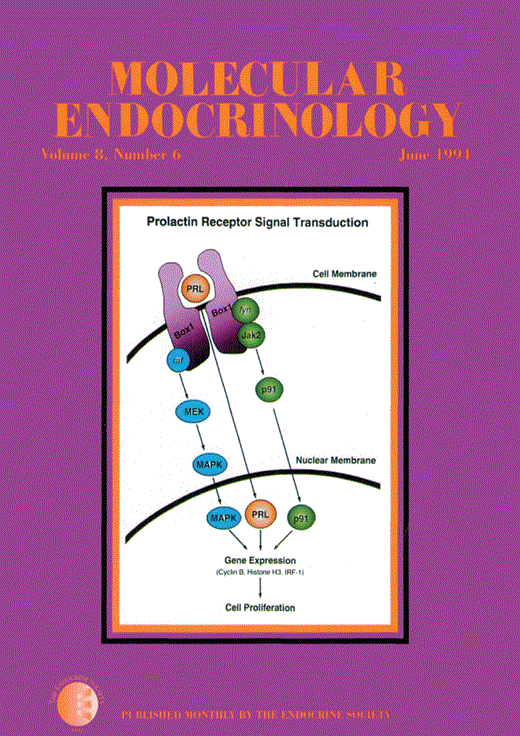-
PDF
- Split View
-
Views
-
Cite
Cite
L A Bishop, D M Robertson, N Cahir, P R Schofield, Specific roles for the asparagine-linked carbohydrate residues of recombinant human follicle stimulating hormone in receptor binding and signal transduction., Molecular Endocrinology, Volume 8, Issue 6, 1 June 1994, Pages 722–731, https://doi.org/10.1210/mend.8.6.7935488
Close - Share Icon Share
Abstract
FSH comprises two distinct subunits, both of which contain asparagine-linked carbohydrate residues, located at positions 52 and 78 on the alpha-subunit and positions 7 and 24 on the beta-subunit. These carbohydrate chains have been shown to regulate the biological activity of FSH, including signal transduction and receptor binding. However, the specific roles of the individual carbohydrate chains have been poorly defined. Using site-directed mutagenesis we disrupted the consensus sequences for glycosylation and expressed the mutated cDNAs in Chinese Hamster Ovary cells. Specifically deglycosylated FSH variants were secreted from all clonal cell lines expressing the mutated FSH cDNAs except for the cell line that lacked all four glycosylation sites. Analysis of the singly or doubly deglycosylated FSH mutants revealed that removal of the carbohydrate residue at position 78 on the alpha-subunit significantly increased the receptor binding affinity of human FSH by 72%. Removal of the other carbohydrate residues had no significant effect on receptor binding. The carbohydrate residue at position 52 on the alpha-subunit was found to play an essential role in signal transduction as its removal resulted in a significant decrease in potency to 26% of wild type levels. The other individual carbohydrate residues appear to play a minor role in signal transduction, although removal of each residue results in reduced maximal response. The removal of both alpha-subunit carbohydrates resulted in a significant decrease in biopotency, to 41% of wild type levels; whereas, the removal of both beta-subunit carbohydrate chains resulted in a significant increase in biopotency, to 216% of wild type levels. These studies have allowed the identification of site-specific roles for the carbohydrate residues of human FSH. Our data suggest that the carbohydrate residues play a greater role in determining the biological activity of FSH than has been suggested in similar studies of other glycoprotein hormones.



